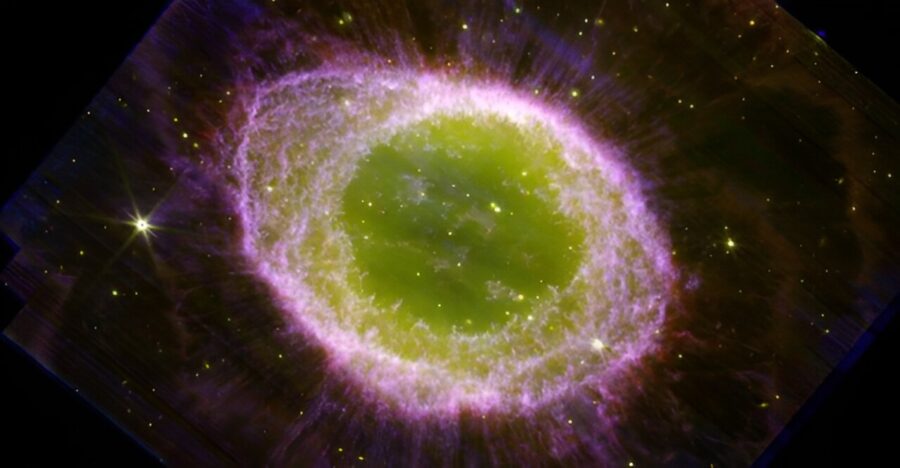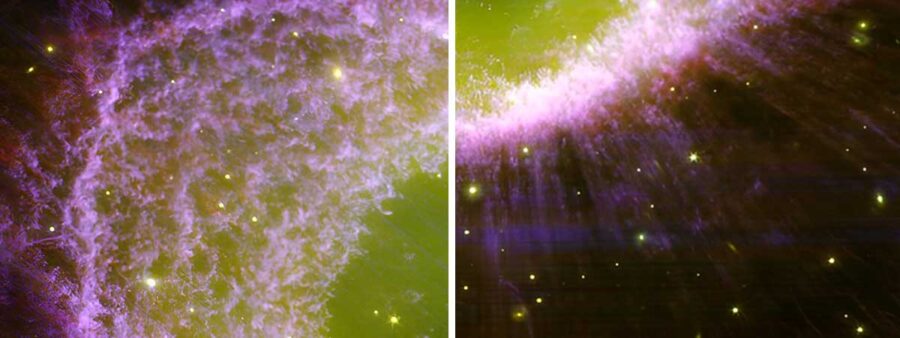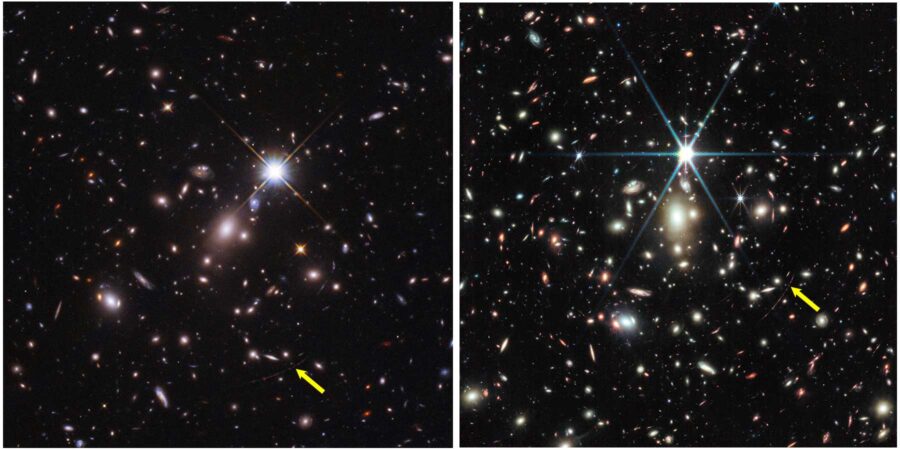This week, astro images reveal new details in the Ring Nebula, the most distant known star, and the super-Jupiter Beta Pictoris b.
Webb's New View of the Ring Nebula

University of Manchester
New images show unprecedented detail in the Ring Nebula (M57), a planetary nebula 2,600 light-years away in Lyra. Low-mass stars create and shape these beautiful emissions as they near the end of their lives; the Sun will do so, too, one day.

University of Manchester, UK
Images such as these serve multiple purposes. Astronomers study them to understand the dynamics of material ejected by the dying star. For example, Albert Zijlstra (University of Manchester, UK) count as many as 20,000 clumps of dense molecular gas within the ring. Half the gas of the nebula is within these clumps, but the radiation coming from the hot star (visible at the ring's center) works away at their shapes, creating comet-like tails in the closer ones. The star's radiation is also responsible for long, linear features seen around the ring.
Read more and see more images in the University of Manchester's press release.
The Colors of Earendel, the Most Distant Star

Left: NASA, ESA; Image processing: NASA, ESA, Alyssa Pagan (STScI); Right: NASA / ESA / CSA; Image processing: Zolt G. Levay ; Science: D. Coe (STScI / AURA for ESA, JHU), B. Welch (NASA-GSFC, UMD)
Following the discovery of the most distant star known, dubbed Earendel, astronomers have now followed up using the James Webb Space Telescope (JWST) to reveal more about the star that exists a mere 1 billion years after the Big Bang.
That the star is visible at all is thanks to both human technological prowess and the phenomenal effects of gravity on large scales. Earendel sits behind a galaxy cluster from our point of view, and the cluster's mass greatly magnifies the background star's light, which first Hubble and then JWST captured. Based on the image taken by the near-infrared camera aboard Webb, astronomers estimate that the star magnified by a factor of 4,000.
Astronomers had already guessed that the discovery might not actually be a single star but a star system, consisting of a massive star with one or more companions. Massive stars tend to have other stars in their milieu, and JWST data confirm that the primary star is several times brighter and hotter than the Sun. The colors of Earendel suggest that there is at least one such companion, a cooler and redder star.
Regardless whether the star has companions, though, JWST data confirm it's not a larger star cluster. Webb can't resolve the dot of light from Earendel any better than Hubble can, which means that the source really is small. Estimates based on Hubble observations had limited Earendel's size to less than 2 light-years across. Now, the JWST image indicates a size limit of just 4,000 astronomical units, or about 40 times the size of the solar system.
Read more from JWST's press release and from the published studies in the Astrophysical Journal: B. Welch et al. 2022 and E. Vanzella et al. 2023.
Beta Pictoris b: 17 Years On Orbit
Patience pays off. The giant planet Beta Pictoris b, which weighs in at 12 Jupiters, takes 23 years to complete a circle around its massive host star in a tilted orbit. Astronomers are in the process of capturing a full orbit, with still frames taken over 17 years so far.
“We need another six years of data before we can see one whole orbit,” said Jason Wang (Northwestern), who led the work. “We’re almost there. Patience is key.”
In the video, the light from the central star is blocked using a coronagraph; the exoplanet is marked with an "x" as it crosses this disc. Uniform processing of archival images and motion interpolation helps mold the images together into a smooth video.
The gas giant is about as far from its A-class star as Saturn is from the Sun, but while the Sun has been around some 5 billion years, the star Beta Pictoris is only about 20 million years old, a relative infant. The planet is so bright at near-infrared wavelengths because it's still glowing with the heat of its formation. First imaged in 2003, Beta Pictoris b is helping astronomers learn about planets during the early years of their formation.
Read more from Northwestern University's press release.
 1
1








Comments
Yaron Sheffer
August 11, 2023 at 3:37 pm
Psst! It’s already 2023. We should have 3 more years of observed motion for Beta Pic b since 2020, no?
You must be logged in to post a comment.
You must be logged in to post a comment.